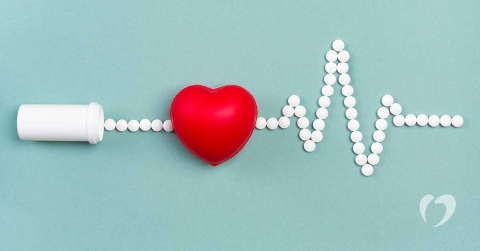Nonsurgical Treatment for Abnormal Heart Rhythms

For patients with abnormal heart rhythms, such as atrial fibrillation, the primary goal of treatment is to restore normal rhythm when possible and to reduce the risk of blood clots and stroke if a normal heart rhythm cannot be restored or maintained. There are a variety of ways a doctor may choose to treat arrhythmias, and often they begin by focusing on nonsurgical treatments.
Nonsurgical treatment of arrhythmia generally includes medication, cardioversion, and catheter ablation.
Medication
There are many options for treating abnormal heart rhythms with medication. Depending on the circumstances, doctors may try several medications in order to find the best one for a patient. There are antiarrhythmic medications that help lessen skipped beats, reduce palpitations, and treat other arrhythmias.
Another approach to managing abnormal heart rhythms with medication is to use an anticoagulant, or blood thinner. Abnormal rhythms can cause blood to pool, which can increase the risk of blood clots and stroke. Blood thinners keep blood from clotting to lessen this risk.
In some cases, arrhythmia can be stopped completely with medication but not in all cases. With anticoagulants, the goal is to prevent further complications rather than to restore normal heart rhythm.
Cardioversion
Cardioversion is a method of restoring normal heart rhythm by stimulating the heart with a high-energy shock. A group of cells called the sinoatrial node acts as the heart’s pacemaker by sending electrical impulses that stimulate a beat. Sometimes the SA node begins sending out the signals irregularly. Cardioversion is an attempt to reset the pacemaker system of the heart. An electrical shock is delivered to the heart through electrode pads, which disrupts the SA node. After the disruption, the heart often resets itself to a normal rhythm.
This procedure may sound similar to defibrillation, but it uses much milder shocks and in vastly different circumstances. Most of the time, cardioversion is a scheduled procedure to correct rhythms that are not immediately life-threatening while defibrillation attempts to restart the heart in emergencies.
Catheter ablation
In some cases, particularly when an arrhythmia cannot be managed with medication or cardioversion, doctors may choose to recommend catheter ablation. Catheter ablation is not surgery but rather a procedure that uses a catheter to access the heart. The catheter is equipped to use heat or freezing technology to destroy the tissue causing the arrhythmia. A successful ablation results in a cure for the patient.
There are many nonsurgical options for managing abnormal heart rhythms. If you have been diagnosed with or suspect an abnormal heart rhythm, contact the Heart Rhythm Institute at Oklahoma Heart Hospital to schedule an appointment with one of our specialists.




